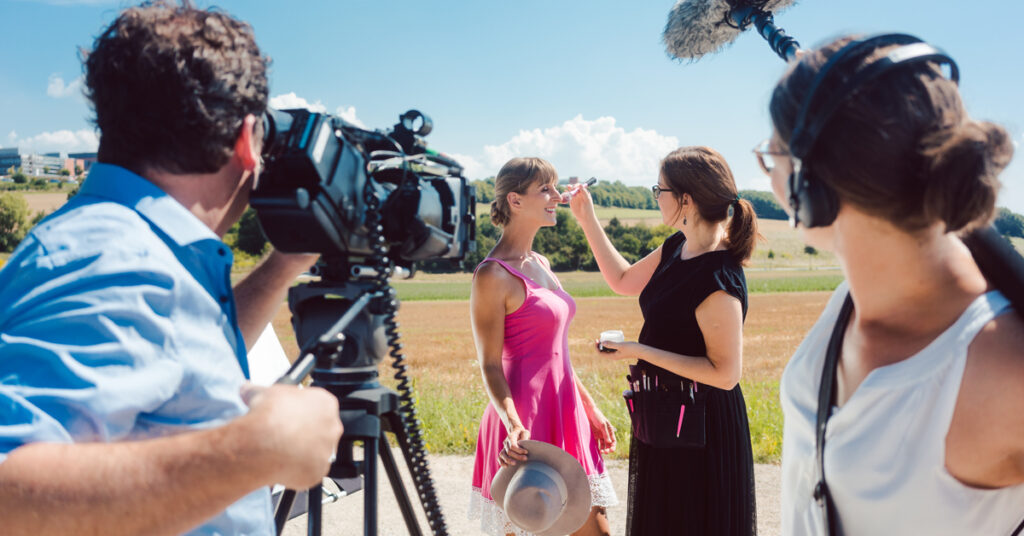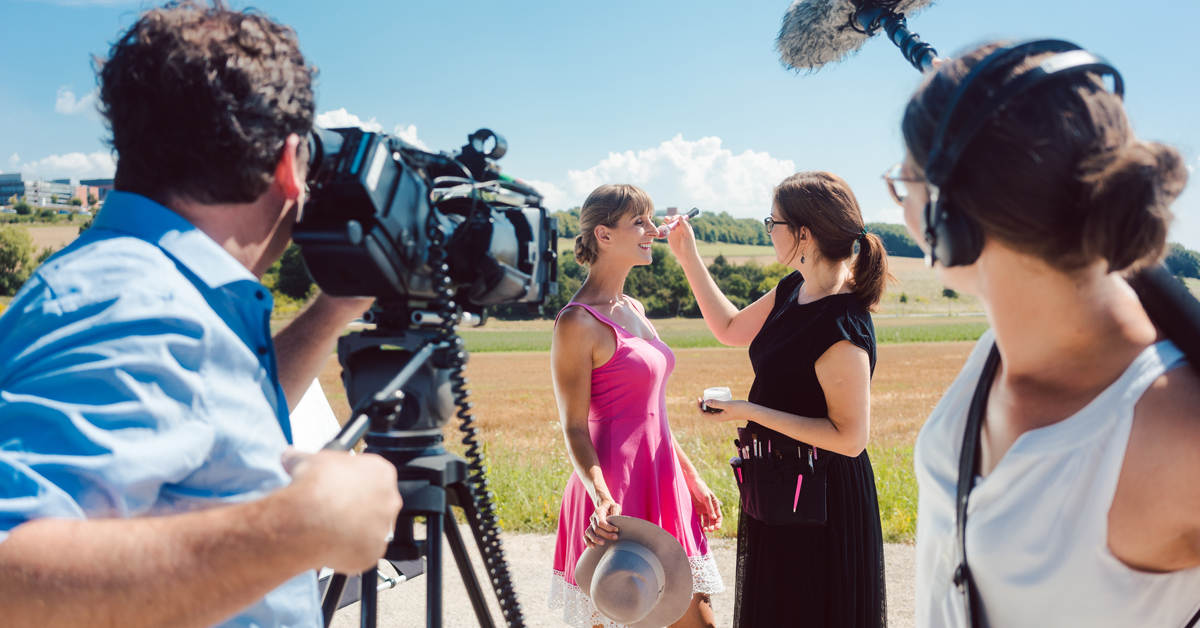
Introduction: Capturing Pristine Audio on Location
Location sound recording is a critical aspect of filmmaking, television production, documentary creation, and even field recording for music. The quality of the audio captured on location directly impacts the final product’s overall impact and believability. Poor audio can distract viewers, make dialogue unintelligible, and ultimately diminish the effectiveness of the visual storytelling. Therefore, selecting the right location sound recording equipment is paramount for any production aiming for professional results.
This comprehensive guide delves into the essential equipment required for successful location sound recording, covering everything from microphones and recorders to monitoring systems and accessories. We will explore the different types of equipment available, their specific applications, and key considerations for choosing the best gear for your needs and budget.
Microphones: The Ears of Your Recording
Microphones are the most crucial component of any sound recording setup. They convert acoustic energy (sound waves) into electrical signals that can be recorded and manipulated. Different types of microphones are suited for various recording situations, each with its unique characteristics and advantages.
Shotgun Microphones
Shotgun microphones are highly directional microphones designed to capture sound from a narrow area in front of them while rejecting sound from the sides and rear. This makes them ideal for recording dialogue and specific sound effects on location, especially in noisy environments. They are commonly mounted on boom poles, allowing sound recordists to position the microphone close to the sound source without being visible in the frame.
Key considerations when choosing a shotgun microphone include:
- Polar Pattern: The polar pattern determines the microphone’s sensitivity to sound from different directions. Shotgun microphones typically have a lobar or hypercardioid polar pattern.
- Length: Longer shotgun microphones generally offer greater directionality but can be more challenging to handle.
- Frequency Response: A wide and flat frequency response ensures accurate reproduction of the recorded sound.
- Sensitivity: Sensitivity refers to the microphone’s output level for a given sound pressure level. Higher sensitivity can be beneficial in quiet environments, while lower sensitivity may be preferable in loud environments.
Popular shotgun microphones for location sound recording include the Sennheiser MKH 416, the Rode NTG5, and the Schoeps CMIT 5U.
Lavalier Microphones
Lavalier microphones, also known as lav mics or lapel mics, are small, discreet microphones designed to be clipped onto clothing. They are commonly used for recording dialogue in situations where a boom microphone is impractical or impossible, such as in fast-paced scenes or when actors are moving around a lot. Lavalier microphones are typically omnidirectional, meaning they pick up sound from all directions.
Key considerations when choosing a lavalier microphone include:
- Size and Weight: Smaller and lighter microphones are easier to conceal and less likely to pull on clothing.
- Polar Pattern: While omnidirectional lavalier microphones are common, some models offer cardioid or hypercardioid polar patterns for improved isolation.
- Frequency Response: A balanced frequency response is essential for capturing natural-sounding dialogue.
- Durability: Lavalier microphones are often subjected to wear and tear, so durability is an important factor.
Popular lavalier microphones for location sound recording include the Sennheiser MKE 2, the DPA 4060, and the Sony ECM-77B.
Handheld Microphones
Handheld microphones are versatile microphones that can be used for a variety of recording applications, including interviews, ENG (electronic news gathering), and on-location performances. They are typically dynamic microphones, which are more rugged and less sensitive than condenser microphones.
Key considerations when choosing a handheld microphone include:
- Polar Pattern: Cardioid polar patterns are common for handheld microphones, providing good isolation from background noise.
- Frequency Response: A wide and flat frequency response is desirable for accurate sound reproduction.
- Durability: Handheld microphones need to be able to withstand rough handling.
- Handling Noise: Some handheld microphones are prone to handling noise, which can be minimized by using a shock mount.
Popular handheld microphones for location sound recording include the Shure SM58, the Electro-Voice RE50, and the Sennheiser MD 46.
Recorders: Capturing the Sound
Recorders are the devices that capture and store the audio signals from the microphones. Modern location sound recording typically utilizes digital recorders, which offer high-quality recording, ease of use, and versatile features.
Portable Audio Recorders
Portable audio recorders are compact and lightweight devices designed for recording audio on the go. They typically feature built-in microphones, as well as XLR inputs for connecting external microphones. Portable recorders are ideal for solo operators, documentary filmmakers, and anyone who needs a convenient and reliable recording solution.
Key considerations when choosing a portable audio recorder include:
- Number of Inputs: The number of inputs determines how many microphones can be connected simultaneously.
- Audio Quality: Look for recorders that support high-resolution audio formats, such as 24-bit/96kHz.
- Battery Life: Long battery life is essential for extended recording sessions.
- Ease of Use: The recorder should be easy to operate in the field, even in challenging conditions.
Popular portable audio recorders for location sound recording include the Zoom H6, the Tascam DR-40X, and the Sound Devices MixPre-3 II.
Multitrack Recorders
Multitrack recorders offer the ability to record multiple audio tracks simultaneously. This is essential for recording complex soundscapes, such as live music performances or scenes with multiple actors speaking at the same time. Multitrack recorders typically feature multiple XLR inputs, as well as advanced features such as timecode synchronization and routing options.
Key considerations when choosing a multitrack recorder include:
- Number of Tracks: The number of tracks determines how many audio sources can be recorded simultaneously.
- Audio Quality: Look for recorders that support high-resolution audio formats.
- Timecode: Timecode synchronization is essential for syncing audio and video in post-production.
- Routing Options: Flexible routing options allow for customized signal flow.
Popular multitrack recorders for location sound recording include the Sound Devices 633, the Zoom F8n Pro, and the Tascam Portacapture X8.
Monitoring: Hearing What You’re Recording
Monitoring is the process of listening to the audio being recorded in real-time. This allows sound recordists to identify and correct any problems, such as noise, distortion, or poor microphone placement. Proper monitoring is crucial for ensuring the quality of the recorded audio.
Headphones
Headphones are the primary tool for monitoring audio on location. Closed-back headphones are recommended, as they provide good isolation from external noise. Headphones should be comfortable to wear for extended periods and offer accurate sound reproduction.
Key considerations when choosing headphones for location sound recording include:
- Closed-Back Design: Closed-back headphones provide good isolation from external noise.
- Comfort: Headphones should be comfortable to wear for extended periods.
- Accuracy: Headphones should offer accurate sound reproduction, without exaggerating any frequencies.
- Durability: Headphones should be able to withstand the rigors of location sound recording.
Popular headphones for location sound recording include the Sony MDR-7506, the Sennheiser HD 280 Pro, and the Audio-Technica ATH-M50x.
Monitoring Speakers
Monitoring speakers can be used in quieter environments to provide a more natural listening experience. However, they are not suitable for noisy locations, as they can be easily overwhelmed by ambient sound.
Key considerations when choosing monitoring speakers for location sound recording include:
- Accuracy: Speakers should offer accurate sound reproduction, without exaggerating any frequencies.
- Portability: Speakers should be compact and lightweight for easy transport.
- Power: Speakers should be able to produce sufficient volume for the listening environment.
Accessories: Essential Tools for the Trade
In addition to the core equipment mentioned above, a variety of accessories are essential for successful location sound recording.
Boom Poles
Boom poles are used to position shotgun microphones close to the sound source without being visible in the frame. They are typically made of lightweight materials such as aluminum or carbon fiber and can be extended to various lengths.
Shock Mounts
Shock mounts are used to isolate microphones from vibrations, which can cause unwanted noise in the recording. They are typically made of elastic materials that absorb vibrations.
Windscreens
Windscreens are used to reduce wind noise, which can be a major problem when recording outdoors. They are typically made of foam or fur and are placed over the microphone.
Cables
High-quality cables are essential for ensuring a clean and reliable signal path. XLR cables are commonly used for connecting microphones to recorders.
Audio Interfaces
An audio interface is crucial for connecting your recording equipment to a computer for editing and mixing. It converts analog audio signals into digital signals that your computer can understand.
Clips and Mounts
A variety of clips and mounts are available for attaching microphones to clothing, stands, and other surfaces. These are essential for lavalier microphones and other small microphones.
Batteries and Power Supplies
Ensure you have an ample supply of batteries or a reliable power supply for all your equipment. Running out of power in the middle of a recording session can be disastrous.
Cases and Bags
Protect your equipment with durable cases and bags. These will help to keep your gear safe during transport and storage.
Choosing the Right Equipment for Your Needs
Selecting the right location sound recording equipment depends on several factors, including your budget, the type of recording you will be doing, and the environment in which you will be recording. Start by assessing your needs and prioritizing the most important features. Consider renting equipment before making a purchase to try out different options and see what works best for you.
Budget Considerations
Location sound recording equipment can range in price from a few hundred dollars to several thousand dollars. It is important to set a budget and stick to it. However, it is also important to invest in quality equipment, as this will ultimately save you money in the long run. Consider purchasing used equipment to save money, but be sure to inspect it carefully before buying.
Conclusion: Mastering the Art of Location Sound
Location sound recording is a challenging but rewarding art. By understanding the essential equipment and techniques, you can capture pristine audio that enhances the impact of your productions. Remember to prioritize quality, reliability, and ease of use when selecting your gear. With the right equipment and a dedication to best practices, you can achieve professional-quality sound recordings on location.

